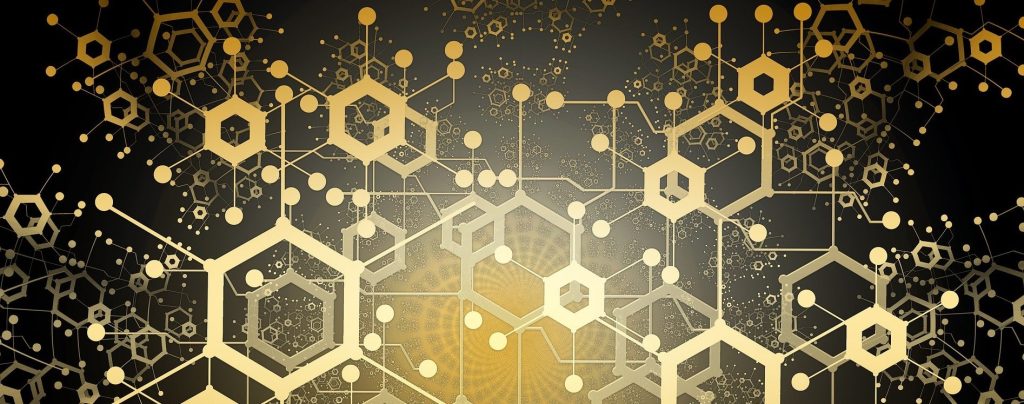In the first episode of our newsletter “Blockchain and copyright – Part 1: A matter of date”, we introduced the concepts of blockchain and NFTs and saw how these technologies can solve the problem of proving the precise date of creation in the context of copyright law.
In this second episode we will see how NFTs can revolutionize the market for art.
Before going into the details of the revolutionary aspects of this technology (2), let us define again what an NFT is, this time in a less technical and more pragmatic way (1).
- NFT Definition
An NFT (Non-Fungible Token) is an immutable digital certificate that provides evidence of ownership of an underlying asset tied to it in a unique way, either because the underlying asset is embedded in the NFT or because the NFT contains a link to it.
Accordingly, when an NFT is transferred, ownership of the underlying asset is transferred with it. It is important to remember that, as a general rule, ownership of the underlying asset does not imply ownership of the copyright in the work. Accordingly, when an NFT is transferred, only the physical or digital ownership of the underlying asset is transferred and not the copyright, if any.
The underlying asset, uniquely and indissolubly linked to the NFT thanks to the information it contains, may be a digital asset, as we saw in the first episode, or even a physical asset, as we shall see later.
Having said this, let us analyze one by one the potential applications of NFTs in the world of art and copyright.
- NFT’s applications to the world of art and copyright
a. Digital scarsity
One of the major problems of digital art has always been the lack of scarcity.
Indeed, digital files have the characteristic of being fungible (perfectly substitutable) and infinitely replicable at zero cost. Among the infinite copies of the digital work that can be created, it is therefore impossible to identify the original(s).
As we have seen above, NFTs are able to uniquely identify a digital file, either because it is embedded in the NFT, and thus immutably and indefinitely written on the blockchain (on-chain), or because it is saved on a server whose address is contained into the NFT, the “tokenURI” (off-chain).
In this way, only files linked to the NFT can be considered originals, thereby artificially creating digital scarcity: a limited and controlled number of originals of digital works, equal to the number of existing NFTs.
The scarcity carries a major consequence: the possibility of creating a market for the originals of digital works, as it is already the case for the originals of physical works of art.
b. Disintermediation
Technically, an NFT is simply a piece of code. As a code, in addition to containing various information, such as a digital file or a link to a server containing a digital file, an NFT can also contain a computer program that is executed when certain conditions are met.
This computer program is called a ‘smart contract’, i.e. a self-executing contract whose terms are written in lines of code.
NFTs and the presence of smart contracts within them enable the disintermediation of the following activities.
- Artist’s resale right
In the EU, artists are granted a small percentage of the sale price whenever the work is resold. However, the conditions to benefit from the resale right are often difficult to meet and require the presence of an intermediary. For example, in Italy, the transaction must take place through an art professional, it must be concluded at a sale price (net of VAT) of at least €3,000, it must be declared to the SIAE and the amount must be paid by the professional to the SIAE which then pays it to the author.
This process can be automated and disintermediated thanks to smart contracts. In fact, it is sufficient to program the smart contract in the NFT linked to the work so that a given percentage of the price of future resales is always paid to the author of the work.
In addition, NFTs could be a way to introduce artists’ resale rights in countries whose legislation does not contemplate them.
- Creation of communities
Thanks to NFTs, it is also possible to imagine the creation of communities built around the artist in which those who have supported the artist by buying an NFT linked to a work can participate to exclusive events or benefit from exclusive services, as well as share part of the revenues generated by the artist, as if they had bought a share in it.
- Liquidity of the market for physical works of art
The NFT being a certificate of ownership, it can certify the ownership of a physical or digital asset. What is crucial is that it contains something that binds it uniquely and inextricably to this asset, e.g. the tokenURI, a car license plate or a QR code stamped on the asset.
When the NFT is tied to a physical work of art, it will be sufficient to transfer the NFT to transfer ownership of the physical work. The physical work of art can thus change hands while remaining in the same place (e.g. a museum or a safe deposit vault), somewhat like in finance when exchanging a certificate of ownership on an underlying asset (e.g. gold), without physically transferring the asset from one person to another.
This allows to reduce the intermediaries involved in the market for art and to fluidify the circulation of ownership of works.
In conclusion, the introduction of digital scarcity and disintermediation will certainly be two revolutionary factors for the market for art. However, with respect to this last point, it should be noted that all these transactions will take place through NFT exchange platforms (see for example OpenSea, the largest NFT marketplace). Until when will these platforms only play a passive role and be satisfied with low percentages on transactions?


